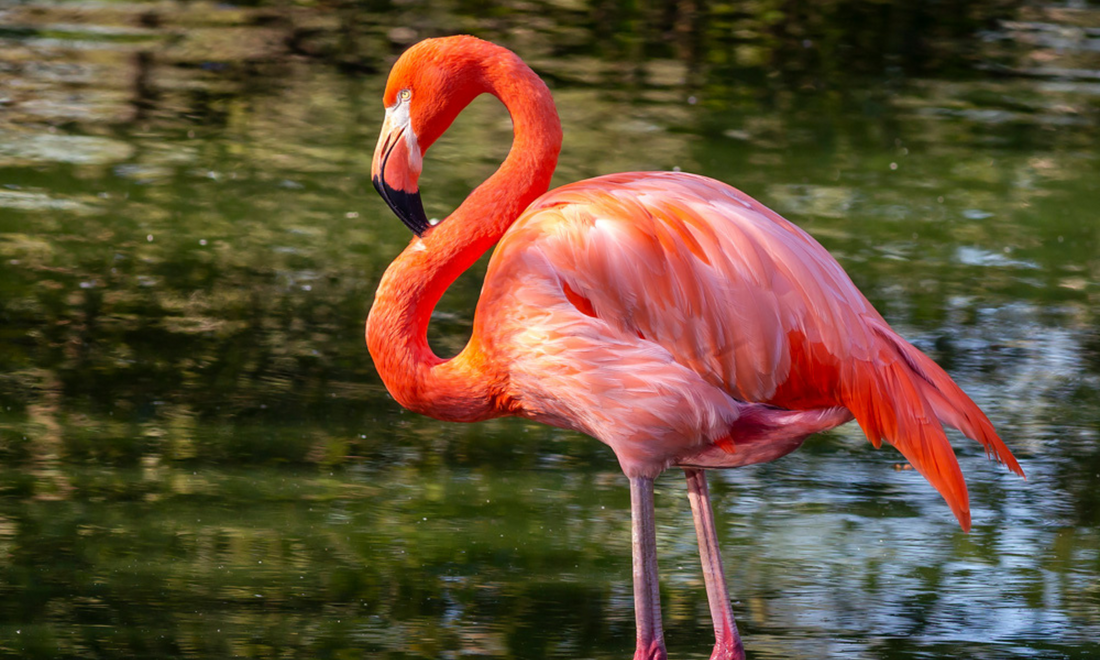With their vibrant plumage and graceful demeanor, flamingos are among the most iconic and captivating birds in the animal kingdom. These majestic creatures are renowned for their distinctive pink hue, long necks, and slender legs, making them a symbol of elegance and beauty.

Flamingos are a genus of birds belonging to the family Phoenicopteridae, known for their striking appearance and sociable behavior. Found in various regions around the world, from Africa and Europe to the Americas and Asia, flamingos inhabit shallow lakes, lagoons, and coastal areas where they can find ample food and suitable nesting sites.
One of the most striking features of flamingos is their vibrant pink plumage, which derives from the pigments in the algae and crustaceans they consume. Their long, slender necks allow them to gracefully bend and reach for food in the water, while their distinctive downward-curving bills are perfectly adapted for filter-feeding.
Flamingos are highly social birds, often forming large colonies or flocks that can consist of thousands of individuals. These gatherings serve various purposes, including mating displays, predator avoidance, and collective foraging. Flamingos are primarily found in wetland habitats, where they can wade through shallow waters in search of food, such as algae, small invertebrates, and crustaceans.

Image: Multiple flamingos
As filter-feeders, flamingos use their specialized bills to filter small organisms and algae from the water. They often feed by wading through shallow water in a distinctive manner, sweeping their bills upside-down through the water to capture prey. Their diet is rich in carotenoid pigments, which contribute to the vibrant pink coloration of their feathers.

Image: Flamingo foraging for food
Flamingos engage in elaborate courtship displays during the breeding season, typically in spring or early summer, showcasing synchronized dancing, head-flagging, and vocalizations. They nest in colonies, building mound-like nests of mud, sand, and vegetation in shallow water or on small islands. The female lays a single egg, and both parents take turns incubating it for around 28 to 32 days. After hatching, the chick is cared for by both parents, fed regurgitated crop milk, and protected within the colony. As the flamingo fledgling matures, it gradually acquires the vibrant pink plumage of adult flamingos and integrates into the social structure of the colony, contributing to the species' survival and the health of their wetland habitats.

While flamingos are not currently considered endangered, they face various threats to their survival, including habitat loss, pollution, and disturbance from human activities. Conservation efforts focus on protecting critical wetland habitats, regulating water quality, and raising awareness about the importance of preserving flamingo populations for future generations.

Flamingos are not only symbols of beauty and grace but also vital components of the ecosystems they inhabit. Their stunning appearance, fascinating behaviors, and important ecological roles make them a source of wonder and admiration for people around the world. By understanding and protecting these magnificent birds, we can ensure that they continue to thrive in their natural habitats for years to come.
Explore Our Flamingo-Inspired Collection! Visit the link at here.

